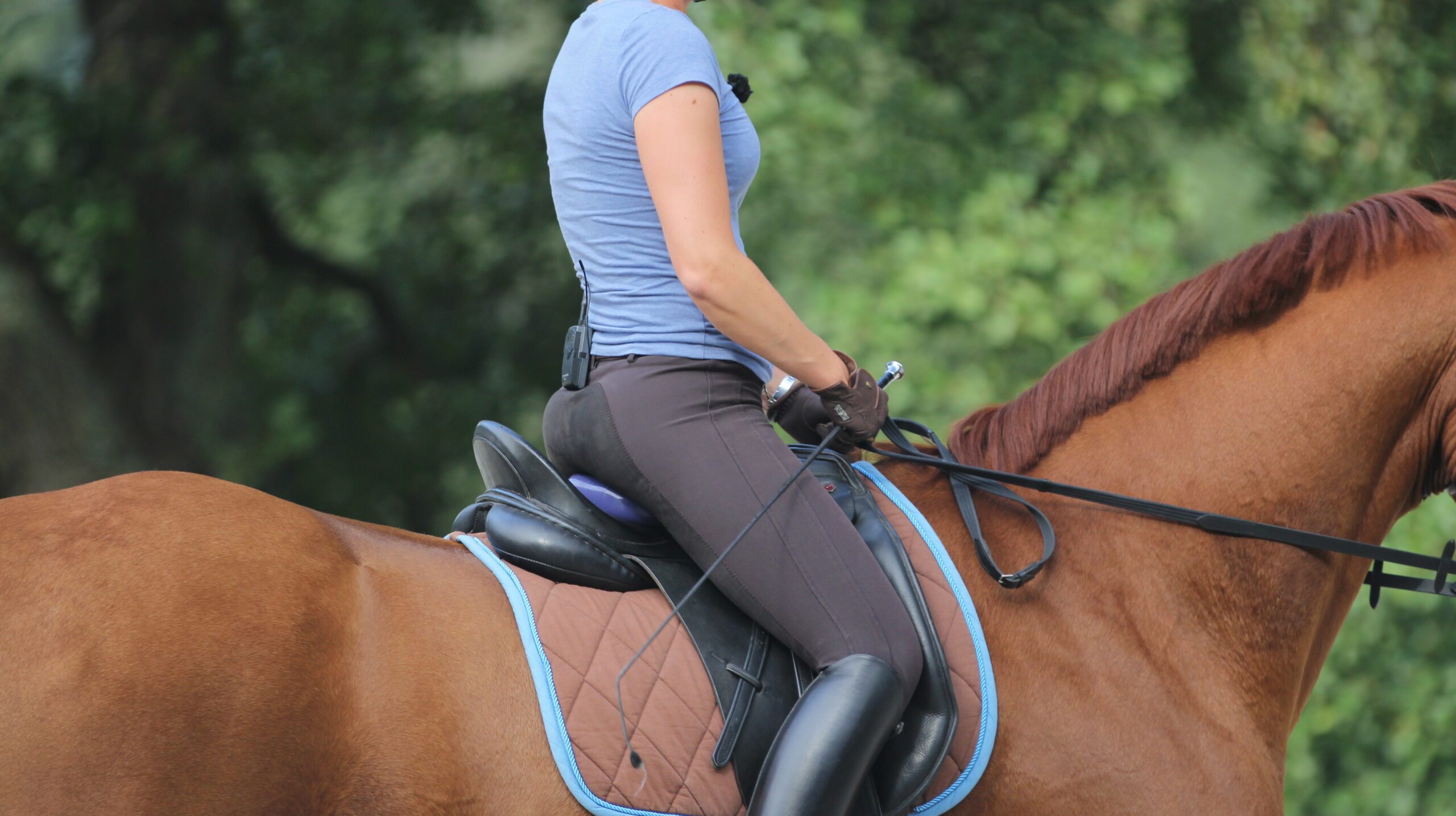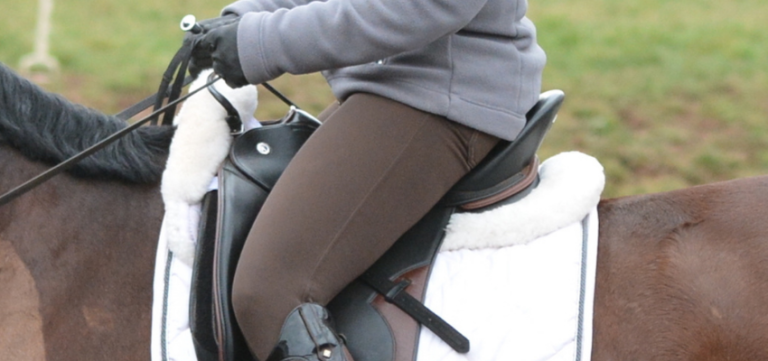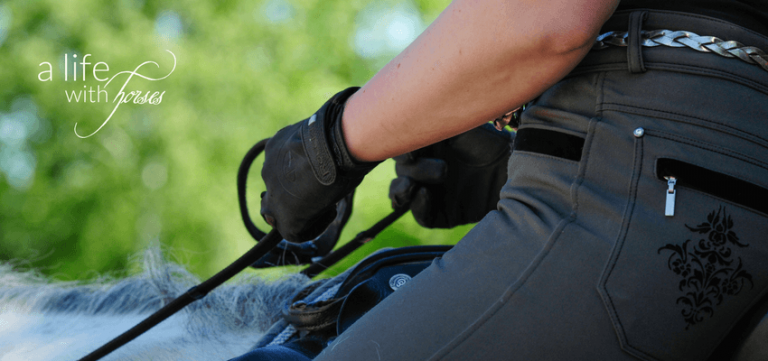Having Control: The Rider’s 3 Crucial Aids
There is nothing scarier than being on a horse that is out of control. If you have ever seen a rider that is novice, you may observe them struggling to gain control of their horse. If a horse does spook, and you see him take off, what is the single most common thing you see all riders do? What does every novice rider do in a mad attempt to regain control? Pull back as hard as they can on their reins. Is this effective? Is this best-practices? How does a rider optimize his or her communication with a given prospect? The answer to this question, and so many more, lies in the three crucial aids.
The 3 Crucial Aids:
- Legs
- Seat
- Hands
While riding, you essentially have three different means of communicating with your horse. Now, naturally, you can use things like your voice, or artificial aids to talk to your horse, but your three natural aids are your legs, your seat, and your hands. Each performs given functions, but ultimately, your goal is to be using all three of your aids in chorus, simultaneously, and harmoniously, to communicate whatever purpose you are trying to communicate as simply, and as clearly, as possible.

3 Routes of Communication
If every rider, every trainer, had a solid foundation in understanding the three crucial aids, you can bet you’d see a lot less chaos out there on the trails or in the arena. Problems like the previous scenario would be less likely to happen, and were they to happen, resolving the issues and regaining control, safely and efficiently, are a whole lot easier. While working with a prospect, a rider has three crucial aids: Her legs, her seat, and her hands. Each of these aids should be used with fidelity and purpose, and ideally, in unison. Like any good practice, it takes time for riders to learn how to use each masterfully, but in time you’ll find that developing your ability to use your three means of communication not only makes your ride more pleasurable, but your horse will thank you for it.
The first crucial aid is your legs. They are much like the pedals on your car. They are your brakes and they are your gas. Referring back to the frightened horse scenario, if a rider loses control of the horse, he or she may naturally squeeze into the horse in an attempt to maintain his or her seat. Again, for the rider, this is simply an effort to stay aboard–but for the horse, especially a horse in flight, this is an indicator to go even faster and works against both parties in that the rider loses even more control, and the horse will typically become even more frightened.
The Legs: Your First Crucial Aid
Legs dictate speed. They dictate direction. They are your stop and go. Reining trainers use their legs and almost solely their legs for maneuvers like spinning. Now, spinning is an incredible intricate maneuver. To perform this one task, a horse must engage low to the ground, maintain a stationary, or relatively stationary pivot foot, cross over up front with often incredible speeds, and stop nearly perfectly depending on what the pattern calls for. During a run, horses are typically required to spin a total of either 4, 4¼, or 4½ spins in either given direction during competition. The NRHA has dictated the following rules: “An over or under spin of an eighth of a turn will result in a 0.5 point penalty. An over or under spin of one-eighth to one-quarter turn will result in a 1 point penalty. An over spin of more than one-quarter turn will result in a disqualification.” This caliber of exacting requires a ton of communication, and it simply could not be done without the legs.
So, How Do Leg Aids Work?
Well, maybe not all, but your legs should always be actively communicating with your horse. They are your first line of communication. They are going to communicate speed, direction, any lateral movement; they will even indicate a stop if you remove the pressure. A slight tap paired with a verbal clicking will indicate a change in gait. Many trainers utilize one leg or the other, often paired with a kiss (*another verbal cue), to indicate a given lead when moving into a lope or a canter. This same tactic is also used to ask for a flying lead change and set your horse up to remain balanced when changing direction. But for the horse to maintain his balance, the rider must be situated in the saddle properly, and that’s where your seat comes in.
The Second Crucial Aid: Your Seat
It is essential that the rider remains mindful of his position in the saddle. He should always maintain an upright posture with squared shoulders and his legs directly underneath him. The heels of the rider should be squared up with his hips with a slight bend in the knees. If your posture is lazy, and your body is leaning to the right, your horse has to compensate for that, compromising the horse’s balance and center of gravity. Riders should strive to sit deep in the saddle. The deeper the rider sits, the easier it is for him to communicate with his horse.
A rider shifting his weight forwards is much like shifting gears in a car. Leaning forward, or sitting forward or in a 2-point will communicate speed to a horse. Sitting back and sitting deep, a stop. The rider’s positioning and seat works to keep a horse balanced and focused. It also works to communicate changes in speed and direction. Your seat should always be used with intention; every movement should have a purpose.
The Third Crucial Aid: Your Hands
The third crucial aid a rider has at their disposal is their hands. Hands should typically be kept relatively stationary, and at the wither, unless riding at two-point, or performing another such specialized maneuver. Most English riders will prefer riding “on contact” that is, with the reins taut and passing over the pinky finger, under the three remaining fingers, and then over the thumb, with thumbs pointing forward. Western practitioners will typically ride single-handed, with the right arms relaxed down and to the side and the left hand holding both reins together, generally with a slight drape in the rein.
The biggest mistake an amateur rider will make is trying to ride with his hands. If an adult has never been on a horse before, you are likely to see them trying to communicate everything they are asking their horse to do with their hands. They may pull out and to the right to ask their horse to turn, or slap the reins on the horse’s shoulders in an attempt to ask it to go. Not many horses are trained in the manner, and as a result, many novice riders will struggle, particularly when riding a veteran horse.
An essential biological consideration is necessary to truly understand training, riding, and simply how horses respond to pressure. Horses are prey animals. Their fight or flight response is both intense, and immediate. This innate predisposition is how horses will react to situations, and to pressure. If you put your right leg on, you are going to be moving your horse to the left as he will be moving away from that pressure–from the pressure of your right leg. When you lunge a horse in a round pen you will always want to be slightly behind (*though facing) your horse, because he will move away from that pressure. Likewise, if you stand in front of your horse, he will likely stop, as he does not want to confront the pressure that is you standing there. Remember that horses will move away from pressure to find release, and your feedback as both a trainer and a rider should be immediate in providing that relief.
Putting it All Together: Using Your 3 Crucial Aids in Unison
Harmonized, purposeful movement is what you’re ultimately aiming for. Your hands should always communicate the same thing as your legs and seat. Any disparities are going to confuse your horse, and upset you. Imagine someone holding their hands up, facing you, but yelling at you to stop. What would you do? You would likely guess, because you wouldn’t know what you were actually being asked to do, and that’s exactly what you would be doing to your horse; making him guess because you didn’t communicate your expectations clearly.
Good horsemen have been known to say, “It’s not the horse, it’s the rider.” Although it’s likely not always the fault of the rider, it can be useful to consider this idea. Riders are always in control of their own communication. What you are “saying” to your horse should always be purposeful and clear. With three different means of communication, there exists little reason to not communicate well, and if practiced with consistency, and fidelity, riders will find their horses more responsive, and their time in the saddle not only better spent, but simply more enjoyable.
Articles about the Rider's Seat & Aids

The Ultimate Guide to a Better Riding Seat!
The seat is important, versatile, changeable, and crucial in riding. It can be stable or flexible, secure or shaky, stiff or springy, harmonious or counterproductive.

Fear while riding: How to build trust in your horse again
Fear when riding develops quickly: one fall, one careless moment, and suddenly fear comes along for the ride. But it doesn’t have to stay that

Riding your Horse with Soft Hands
The ability to ride your horse with soft, quiet hands is the first step towards developing an even, elastic contact to the bit and, therefore, with the mouth of your horse.
